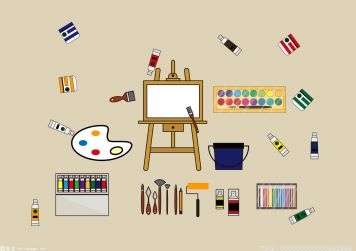Tutorial 1.4: Bone Setup
This tutorial builds on the results of the previous two, teaching you how to add bones to a character. You can either continue with the project you created in Tutorial 1.3, or you can open a file provided for you named “Tutorial 1.3”. This file can be found in the “Tutorials/1 - Basics” subfolder within your custom content folder.
Bones are an important tool you can use in Moho to help make animation easier. If you think of drawings in Moho (like the ones you made in previous tutorials) as soft rubber, then bones can be thought of as stiff wires inside the rubber that help you move and position objects. Bones are never displayed in a final rendering, they’re just used as tools during the animation process.
 (资料图片仅供参考)
(资料图片仅供参考)
Bones are not absolutely necessary for animation. They are very helpful for animating certain types of motion as we’ll show in this and the next tutorial, but there are other ways to animate in Moho as well. As you gain experience using Moho, you’ll learn when bones are appropriate and when they’re not.
本教程建立在前两个的基础上,教您如何为角色添加骨骼。您可以继续在教程 1.3 中创建的项目,也可以打开为您提供的名为“教程 1.3”的文件。该文件可以在自定义内容文件夹中的“Tutorials/1 - Basics”子文件夹中找到。
骨骼是一个重要的工具,您可以在 Moho 中使用它来帮助简化动画制作。如果您将 Moho 中的绘图(就像您在之前的教程中制作的那样)认为是软橡胶,那么骨骼可以被认为是橡胶内的硬线,可以帮助您移动和定位对象。骨骼永远不会在最终渲染中显示,它们只是在动画过程中用作工具。
骨骼对于动画来说并不是绝对必要的。正如我们将在本教程和下一个教程中展示的那样,它们对于动画某些类型的运动非常有帮助,但在 Moho 中也有其他动画方法。随着您获得使用 Moho 的经验,您将了解骨骼何时合适,何时不合适。
Importing an Object
Launch Moho and open the project from the last tutorial.
启动 Moho 并打开上一个教程中的项目。
在构建 Moho 项目时,有时您可能希望重用之前创建的对象。 有一个简单的方法可以做到这一点,我们现在将使用它来为项目添加一个角色。
选择文件 > 导入 > Moho 对象... 命令。 在出现的文件对话框中,导航到您的 Moho 自定义内容文件夹。 从您的自定义内容文件夹中,找到 Tutorials/1 – Basics 文件夹并打开文件“Tutorial Extras”。 将打开一个对话框,询问您要从该项目中使用哪个对象:
If you have not yet created a custom content folder, choose Help > Set Custom Content Folder to create one. See “Creating a Content Folder”on page 16 in your MohoUsers Manualin your Moho Users Manual)。
在对话框的左侧选择名为“Frank”的图层。 在右侧,您会看到 Frank 的预览。 单击确定。 一个新层将添加到您的项目中。 该图层是“Tutorial Extras”项目中 Frank 图层的副本。 Frank 已完全绘制并填充 - 您可以通过选择“文件”>“预览”来查看场景现在的真实样子。
Adding Bones
让我们给弗兰克一些骨头,让他更容易制作动画。 在“图层”窗口中,单击新图层按钮。 在出现的弹出菜单中,选择“骨骼”。 将这个新层重命名为“Skeleton”。
将 Frank 层向上“拖入”Skeleton 层。 这一步非常重要 - 当 Skeleton 图层突出显示时,您将知道您正在将 Frank 图层拖动到正确的位置。 最后,单击骨架层以确保它处于活动状态。 完成后,图层面板应如下所示:
确保在“图层”面板中选择了“骨架”图层。 单击 Tree、Clouds 和 Hills 图层左侧的眼球图标以暂时隐藏它们
Finally, use the Pan and Zoom tools to zoom in on the contents of this layer. Your window should now show something like this:
最后,使用平移和缩放工具放大该图层的内容。 您的窗口现在应该显示如下内容:
选中 Skeleton 层后,通过选择 Add Bone 工具并单击并向上拖动来为 Frank 添加一个骨骼,如下所示:这将是主要的控制骨骼 - 您可以将其视为 Frank 的脊椎。 它应该如下所示:
单击并拖出另外三个骨骼,如下所示。 从上到下依次画出这三块骨头很重要:大腿、胫骨和脚。
选择骨骼时,它会以突出显示的颜色红色绘制。
添加新骨骼时,它会成为当前选定骨骼的“子代”。 骨骼的父子关系意味着孩子可以在不影响父母的情况下四处移动,但是如果父母移动,孩子也会随之移动。 这就是为什么按顺序绘制前三块骨头很重要:大腿骨连接到脊椎骨,胫骨连接到大腿骨,脚骨连接到胫骨(至少在弗兰克的身体中)。
选择骨骼后,它会显示为红色。 它的父级也以不同的方式显示:蓝色。 父骨骼像这样突出显示以供您参考 - 有时您可能以错误的顺序连接骨骼,寻找蓝色父骨骼有助于确定哪里出了问题
好的,让我们在另一条腿上添加骨骼。 但首先,我们需要再次选择脊椎,以便第二条腿也将连接到它。 使用 Select Bonetool 并单击脊椎以将其选中。
接下来,使用添加骨骼工具将三个骨骼添加到另一条腿,如下所示:
Testing Bones
有一个骨骼工具可以让你测试你的骨架结构是如何工作的。 现在让我们试试。 选择操纵骨骼工具并单击并拖动您创建的任何骨骼。 尝试拖动几根骨头,看看会发生什么。
请注意,Frank 会自动随着骨骼移动。 你可能还注意到弗兰克斯看起来很“软”——当你移动他的任何一条腿时,他的头也会改变形状。 下一步是通过告诉 Moho 的 Frank 的哪些部分应该与哪些骨骼一起移动来稍微清理一下。
当您在第 0 帧时,操纵骨骼工具不会永久移动骨骼。 单击“选择骨骼”工具,所有骨骼将重新回到原来的位置。
Adjusting Bone Strength
When you use a bone layer to control a character, every bone in the skeleton has some influence on every part of the character. We saw that in Frank - when you move one of the legs, even the head moves a bit. This influence is strongest closest to each bone, so the head only moves a little bit, not as much as the leg itself.
We don’t really want to see Frank’s head move much at all when his legs move. Luckily, there’s a way to control this: bone strength. Each bone has a “strength” value that controls how large its region of influence is. What we’ll do next is adjust the strength of the bones that control Frank.
当您使用骨骼层来控制角色时,骨骼中的每根骨骼都会对角色的每个部分产生一定的影响。 我们在弗兰克身上看到了这一点——当你移动一条腿时,甚至头部也会移动一点。 这种影响在靠近每块骨头的地方最强,所以头部只移动一点点,不像腿本身那么多。
当他的腿移动时,我们真的不想看到弗兰克的头部移动太多。 幸运的是,有一种方法可以控制这一点:骨骼强度。 每个骨骼都有一个“强度”值,用于控制其影响区域的大小。 我们接下来要做的是调整控制弗兰克的骨骼强度。
选择骨骼强度工具并查看骨骼。
每个骨骼都有一个突出显示的半透明区域。 (您在使用“操纵骨骼”工具时也看到了这些区域。)这些区域向您展示了骨骼中每个骨骼的影响。 骨骼在其阴影区域内的影响最大。
With the Bone Strength tool active, click and drag side-to-side on each of the bones in Frank’s skeleton to adjust its strength. The goal here is to adjust the region of each bone so that it just encloses the corresponding section of Frank’s body. For example, the region around the shin bone should just enclose the shin, and not much more. Don’t worry about being too precise - pretty close is good enough. For Frank’s head, don’t make the bone region enclose the entire head - that would make the bone too strong. Adjust the bone strengths so that they look approximately like the following:
激活骨骼强度工具后,单击并左右拖动 Frank 骨骼中的每个骨骼以调整其强度。 这里的目标是调整每个骨骼的区域,使其恰好包围弗兰克身体的相应部分。 例如,胫骨周围的区域应该只包围胫骨,而不是更多。 不要担心太精确 - 非常接近就足够了。 对于 Frank 的头部,不要让骨骼区域包围整个头部 - 这会使骨骼过于坚固。 调整骨骼强度,使其看起来大致如下所示:
Testing Bones (Again)
Once you adjust bone strengths, it’s a good idea to test the skeleton again to make sure everything works correctly. Pick the Manipulate Bones tool from the toolbar and click and drag on Frank’s shin bones just above the ankle.调整骨骼强度后,最好再次测试骨骼以确保一切正常。 从工具栏中选择 Manipulate Bones 工具,然后单击并拖动 Frank 脚踝上方的胫骨。
If everything was set up correctly, Frank should be able to move like this:如果一切设置正确,弗兰克应该能够像这样移动:
玩耍 - 将弗兰克的骨头移动到不同的位置,感受操纵骨骼的感觉。 第 38 页的“教程 1.5:动画”将介绍动画,您将学习如何使对象随时间移动。
- 见字如晤|张兆和:“多情人不老”
- 世界观速讯丨《海上晨钟》演绎民族品牌的成长传奇
- 世界观焦点:还记得比尔盖茨前妻梅琳达吗?有新男友了
- 一如年少模样
- 衢州风华学校教师宋晴斩获省级比赛一等奖
- 阿根廷队将与阿联酋队进行一场友谊赛后前往卡塔尔
- 卡塔尔世界杯各队大名单全出炉 我们总结了5个“最”
- 世界消息!北京唯一“五线换乘”枢纽!丽泽城市航站楼交通枢纽获批
- 全球新动态:美国今年流感季已致1300人死亡 专家呼吁民众积极接种流感疫苗
- 天天快播:世界首个唾液孕检试剂盒即将上市
- 天天滚动:今年以来我国新开工重大水利工程45项 创历史新高
- 热点聚焦:北京朝阳:继续增加核酸检测点位和通道,优化点位布局
- 美国登月火箭终于发射升空 执行“阿耳忒弥斯1号”任务
- 看热讯:10月民航客运数据发布 主要运营指标同比下滑
- 世界热资讯!绿色菜单引领餐厅低碳消费新风尚
- 燕麦奶不等于燕麦加牛奶
- 四川省总工会职工心理健康服务活动走进遂宁
- 今日关注:北京新增感染者中,147例为隔离观察人员,涉及13区
- 全球播报:贵州大方:非遗传人高光友获“贵州工匠”称号
- 世界通讯!用包裹着火焰的诗句,抚平时光的皱纹|“娜夜诗选”首发
- 2000千克是多少吨?1吨等于多少磅?
- 含“相接”的成语有哪些?人山人海出自哪里?
- 描写潮水的四字成语有哪些?闷雷滚动近义词都在这儿!
- 中国最吓人的一本古籍是什么?为什么现在中医不学本草纲目?
- (V面日报11.15)彩虹酱哇、鈴宮鈴、阿萨获涨粉、营收、人气榜榜首
- 干燥剂怎么重复利用?与压片型干燥剂类似的干燥剂有哪些?
- 世界微资讯!疫情午报|31省区市昨日新增1.9万余例,详情汇总
- 环球今日讯!国内旅游市场再迎利好 出行信心恢复仍需时间
- 焦点精选!2022“阅读北京·十佳优读空间”评选结果出炉
- 全球新资讯:衢江区“一库一策”动态清零病险水库





